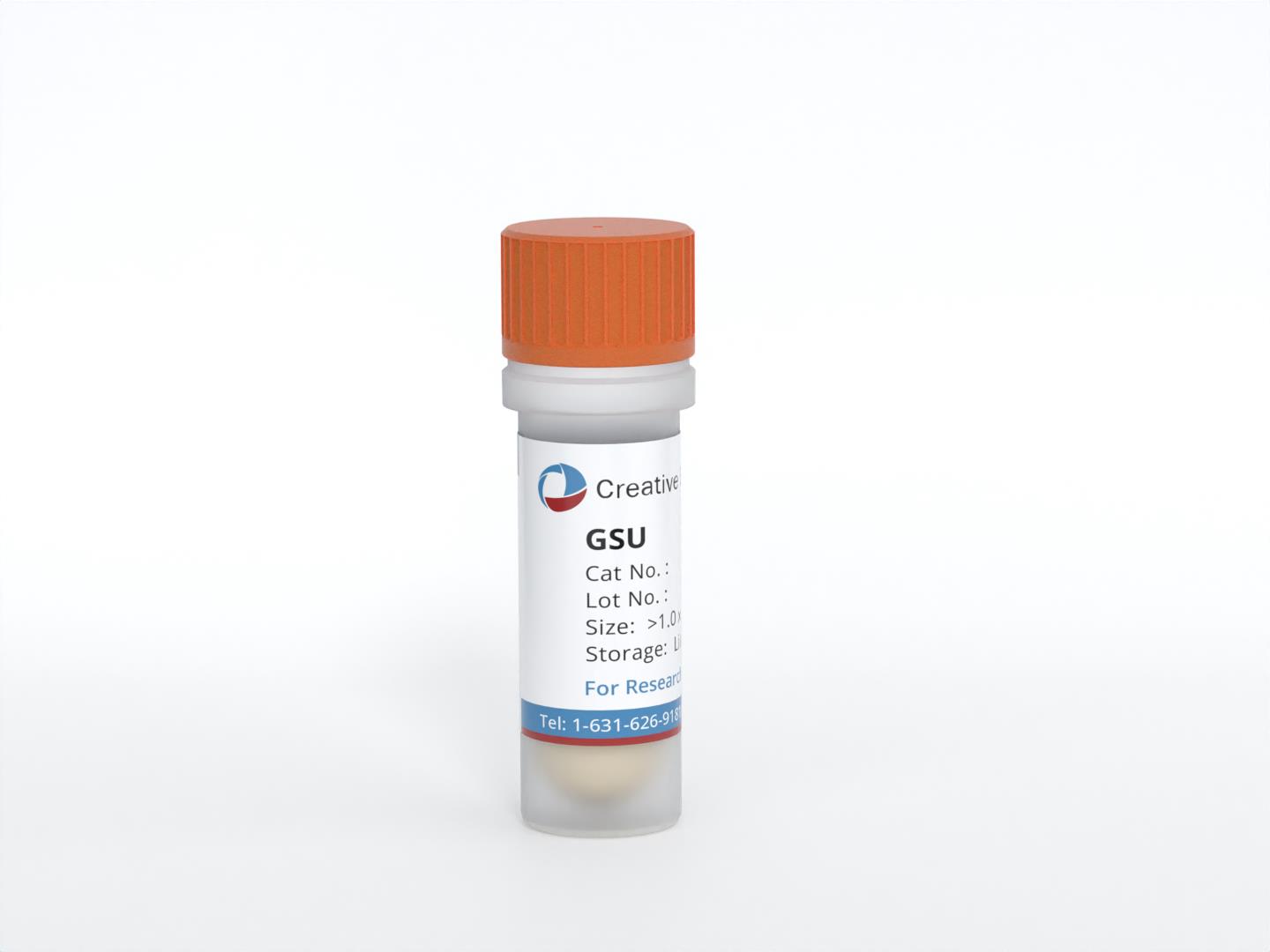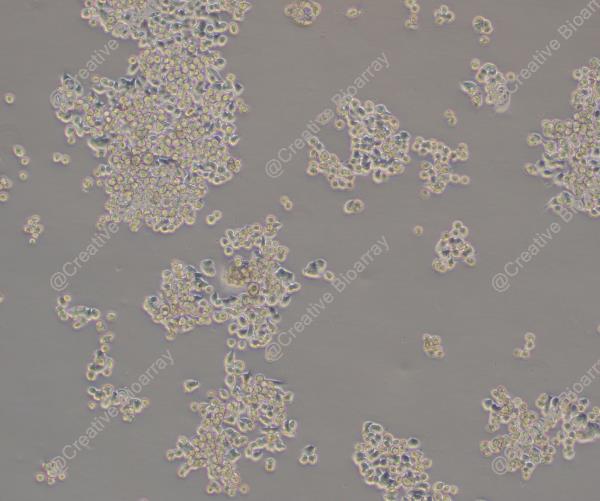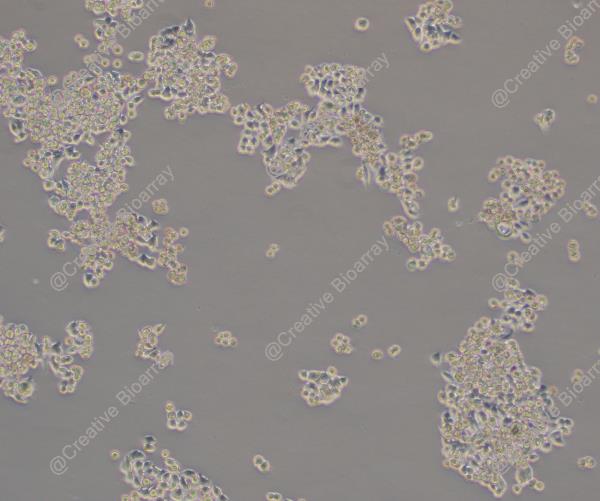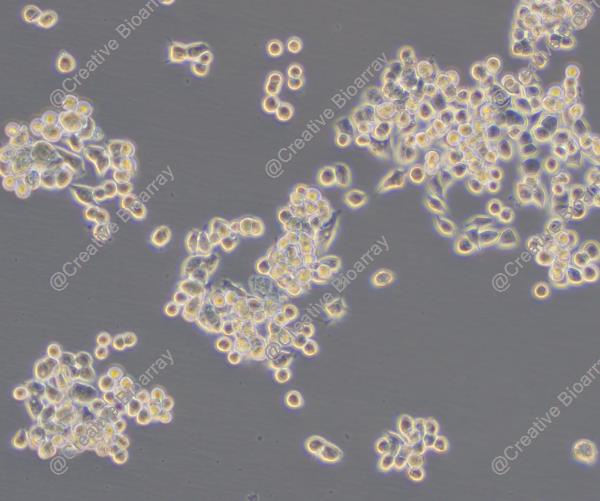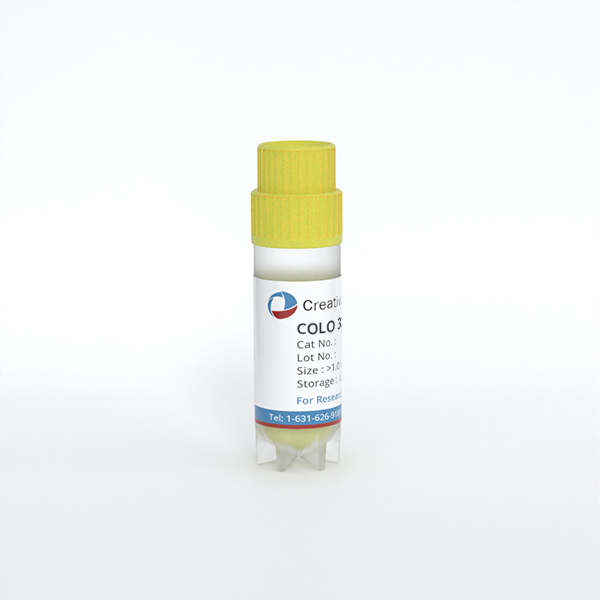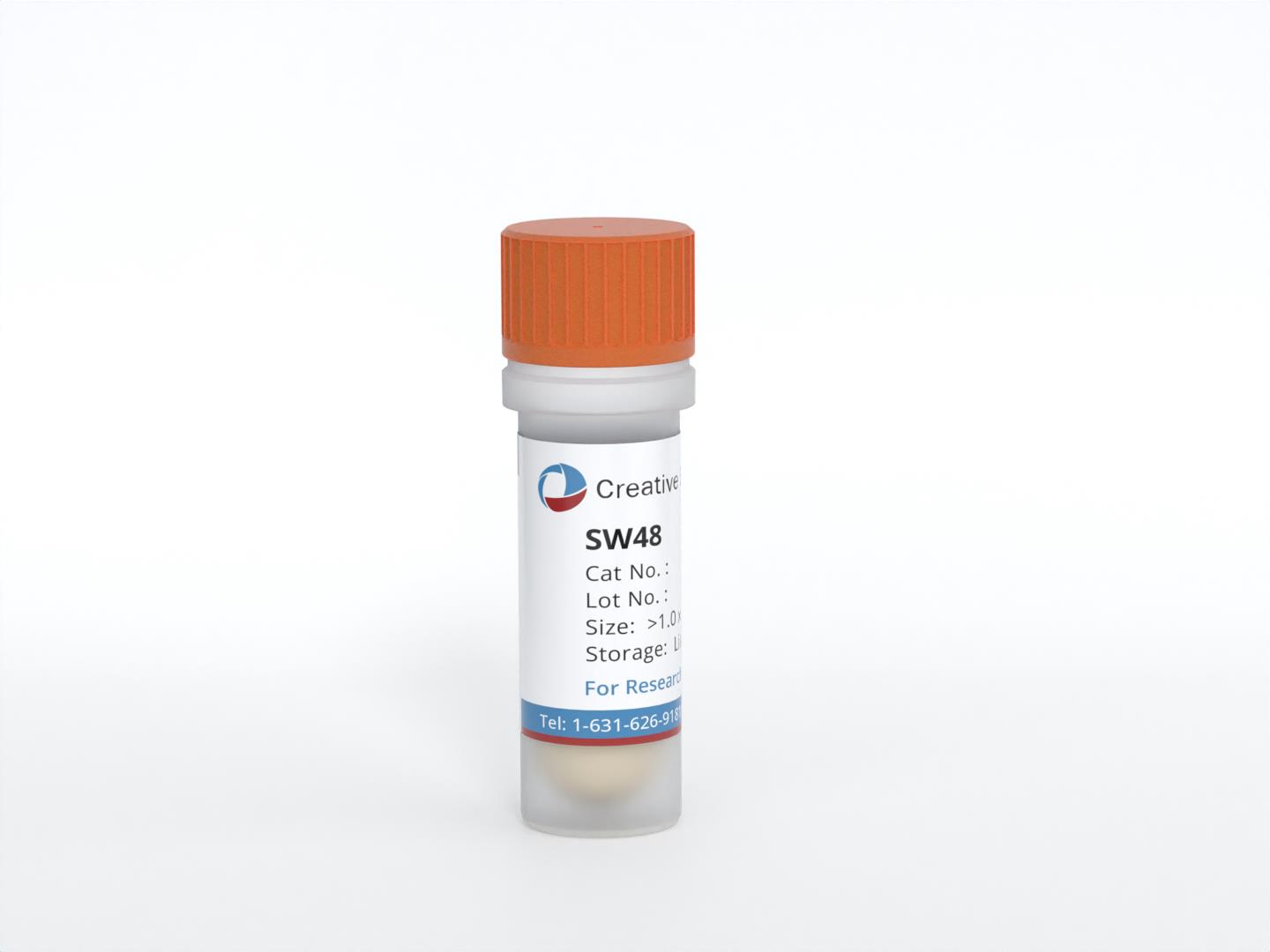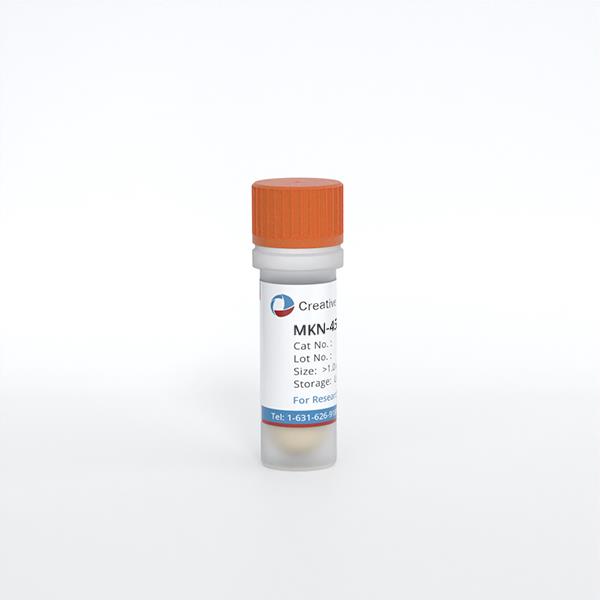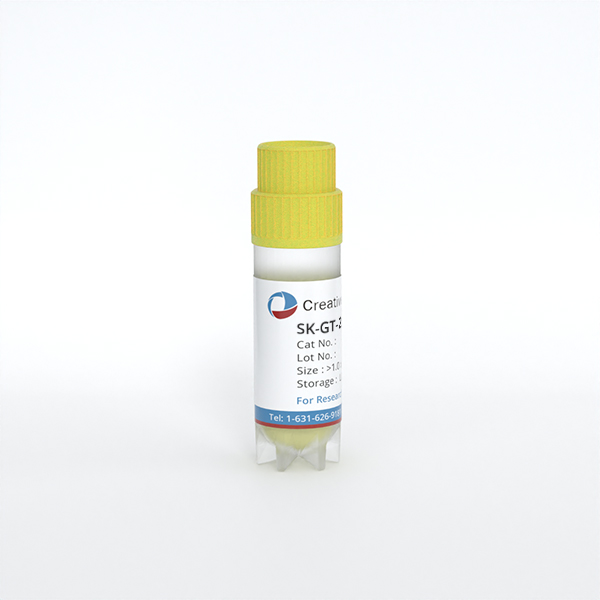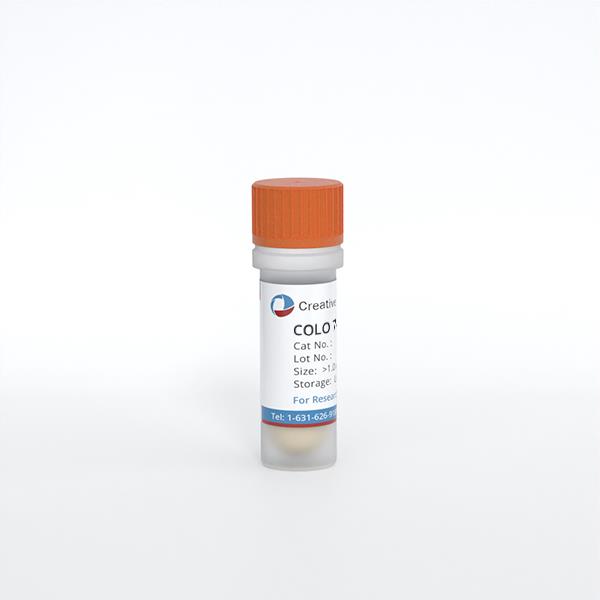Featured Products
Our Promise to You
Guaranteed product quality, expert customer support

ONLINE INQUIRY
GSU
Cat.No.: CSC-C6317J
Species: Human
Morphology: other
Culture Properties: Adherent cells
- Specification
- Background
- Scientific Data
- Q & A
- Customer Review
Store in liquid nitrogen.
The GSU cell line is a human cell line derived from gastric cancer, specifically established from the cells present in the ascitic fluid of a patient with this malignancy. Ascites can contain cancer cells that have detached from the primary tumor, providing a rich source of malignant cells for cell line development. The GSU cell line has been characterized by its growth properties, genetic profile, and phenotypic traits, making it a valuable tool for cancer research.
The GSU cell line was created to provide a reliable and reproducible model system for studying the biology of gastric cancer. In the laboratory, GSU cells exhibit characteristics typical of gastric cancer cells, such as rapid proliferation, the ability to form colonies in soft agar, and the expression of specific biomarkers associated with gastric cancer. These cells can be cultured in vitro, allowing researchers to perform a variety of experiments to investigate the effects of genetic mutations, drug treatments, and other interventions on gastric cancer cell behavior.
Trastuzumab and Cetuximab Sensitivity of Gastric Cancer Cell Lines
A panel of 11 gastric cancer cell lines was used. Following treatment with 10 µg/ml cetuximab, GSU cells displayed a decrease in cell proliferation to 68.10% in comparison with the untreated control (p = 0.04). H111TC cells were less sensitive with growth rates of 82.30% after treatment with 10 µg/ml cetuximab (p = 0.002) and a maximum inhibition of 80.16% after application of 200 µg/ml (p < 0.001). MKN7 cells showed only a minor sensitivity with a maximum decrease of cell proliferation to 83.63% following treatment with 100 µg/ml cetuximab (p = 0.001). HGC-27 cells were completely resistant to cetuximab.
Additionally, the trastuzumab sensitivity of the cell lines was investigated via cell proliferation assay (Fig. 1). Two cell lines were identified as trastuzumab sensitive: GSU and H111TC. Both displayed a significant decrease in cell proliferation after the application of the therapeutic. For GSU, 0.1 µg/ml was already sufficient to inhibit the proliferation rate to 80.10% (p = 0.009), while 40 µg/ml caused an inhibition of 72.98% (p = 0.002). H111TC displayed a less sensitive phenotype with a maximum inhibition of 80.03 and 80.31% after application of 20 µg/ml and 40 µg/ml trastuzumab (p = 0.024; p = 0.02), respectively. For the other cell lines, no significant inhibition of cell proliferation was observed.
Table 1. Effect of cetuximab treatment on the gastric cancer cell lines. (Kneissl J, et al., 2017)
| Cell lines | AGS | GSU | H111TC | HGC-27 | Hs746T | KATOIII | LMSU | MKN1 | MKN7 | MKN28 | MKN45 |
| Cetuximab sensitivity | - | +++ | ++ | - | - | - | - | ++ | + | ++ | - |
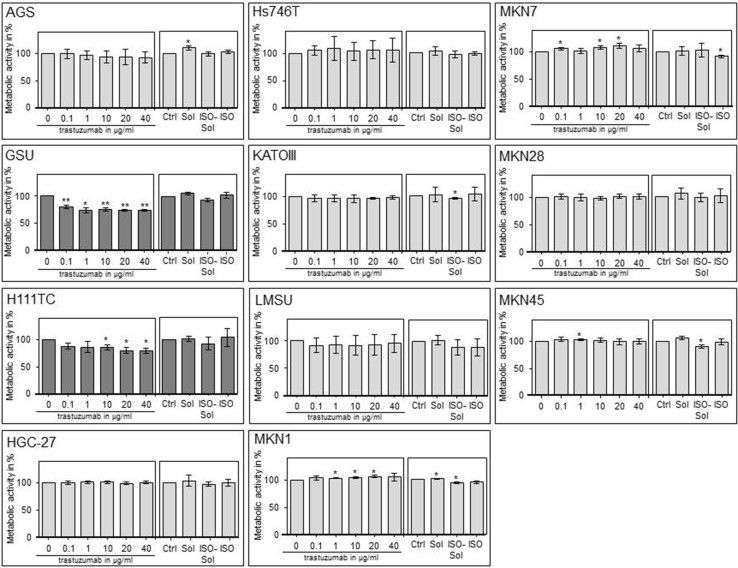 Fig. 1 Effect of trastuzumab treatment on the cell proliferation of gastric cancer cell lines. (Kneissl J, et al., 2017)
Fig. 1 Effect of trastuzumab treatment on the cell proliferation of gastric cancer cell lines. (Kneissl J, et al., 2017)
Cancer cell lines are widely used in biomedical research; they provide excellent model systems to study mechanisms associated with cancer development, thereby improving the understanding of cancer cell biology. Furthermore, these cell lines are used for the development and screening of novel anticancer drugs.
GSU cells were established by isolating cells from the ascites fluid of a patient with gastric cancer. Ascites is the accumulation of fluid in the peritoneal cavity, often seen in advanced stages of cancer. This fluid contains cancer cells that have detached from the primary tumor, providing a rich source of malignant cells for cell line development.
GSU cells are significant in cancer research because they provide a reliable and reproducible model system for studying the biology of gastric cancer. They help researchers understand the molecular and cellular mechanisms underlying gastric cancer and are essential for developing and testing new therapeutic strategies.
GSU cells are important for drug development and testing because they serve as a platform for screening new anticancer drugs. Researchers can evaluate the efficacy and toxicity of potential therapeutic agents on GSU cells, providing crucial preclinical data that can help in advancing promising drug candidates to clinical trials.
Ask a Question
Average Rating: 4.7 | 3 Scientist has reviewed this product
Good progress
We followed the instructions for cell culture, freezing and storage, and all went well.
15 Jan 2023
Ease of use
After sales services
Value for money
Exceptional quality
I have been using GSU cells from Creative Bioarray for my research on gastric cancer, and I think the quality of these cells is exceptional.
15 May 2024
Ease of use
After sales services
Value for money
Detailed information
The customer service was also fantastic, promptly addressing all my queries and providing detailed information about the cell line. Highly recommended!
29 Apr 2024
Ease of use
After sales services
Value for money
Write your own review
- You May Also Need

